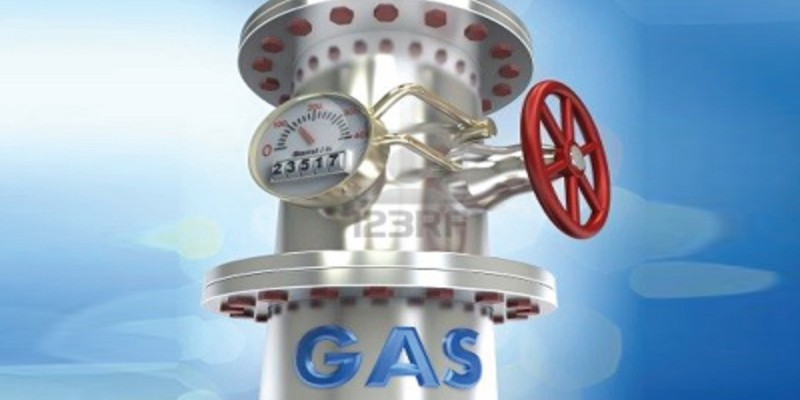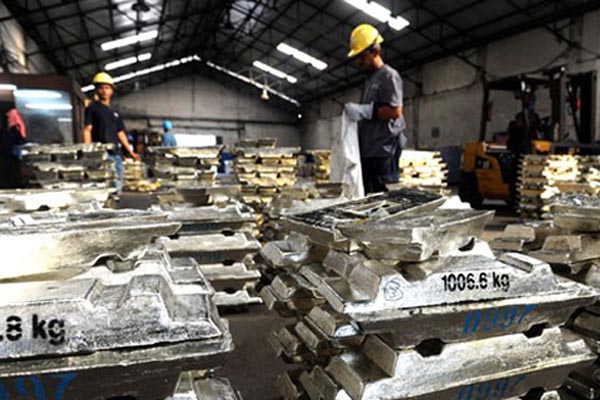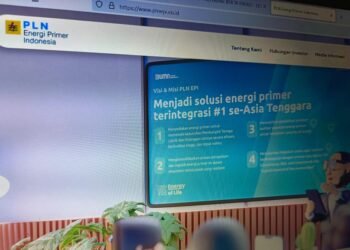Eksplorasi.id – Once – but no longer – the world’s second-largest gas producer, Indonesia will soon need to import LNG to meet soaring domestic demand for gas.

Indonesia is one of Asia’s most buoyant economies, expected to grow 6 per cent this year. It is also the world’s fourth most populous nation, its 255 million people spread across 14,000 islands.
Indonesia’s gas production has failed to keep pace with growing demand, at home and abroad. By 2014, the country had fallen in the world rankings to become the world’s tenth-largest gas producer, at 74.4 billion mᶾ, according to BP, but was also the 25th largest consumer of gas, using 38.4 billion mᶾ.
Indonesia cut its LNG output by 1 million tonnes (mt) in 2014, having shut down exports from Arun LNG in October and converting the plant into a receiving terminal. It now has three LNG-production plants that last year delivered some 16.5mt, of which it exported 14mt.
The three liquefaction plants are the 22.5 million tonne a year (mta) Bontang LNG plant on Kalimantan, the 2 mta Donggi-Senoro LNG on Sulawesi and the 7.6 mta, BP-owned Tangguh LNG in Irian Jaya, which is due to add a third train, of 3.8 mta.
Energy World plans to build a second Sulawesi-based LNG plant, the Sengkang LNG project, comprising two initial trains producing 0.5 mta each.
Two foreign energy majors proposed to develop Indonesia’s first floating LNG (FLNG) production project, Abadi FLNG, a US$15 billion plan to tap the offshore Masela gas field. Inpex and Shell wanted to develop the site as a 7.5 mta FLNG venture – more than double the output of Shell’s 3.6 mta Prelude FLNG venture off Western Australia.
The project had already suffered delays, amid disagreements over whether it should be developed on or off shore, by the time President Joko Widodo announced in March this year that it will be shore-based after all. Abadi FLNG was expected to start production in 2020. That prospect now looks uncertain.
And so, despite its plans to increase its gas-production capacity, Indonesia is on course to become a net importer of LNG by the end of this decade. National oil company Pertamina expects national LNG demand to increase to 12 mta by 2019-2020 and is looking to secure 6.1 mta from the international market.
Demand pressure
The scale of projected demand has put Indonesia under intense pressure to secure its future energy supply and to invest in the infrastructure to deliver it. Indonesia’s ministry of energy predicts that the country will need to more than double its electricity production, from 213 tWh in 2013 to some 440 tWh by 2022 to meet annual demand growth of 7-8.5 per cent.
Joko Widodo’s government sees mid- and small-scale LNG distribution as a solution to the country’s growing energy needs. State-owned power company Perusahaan Listrik Negara (PLN) has launched a mini-LNG strategy, in which coastal LNG carriers of around 10,000mᶾ capacity will deliver to Bali, Lombok, Makassar and Maluku and other locations.
Today, Indonesia has two import terminals on its largest island, Sumatra – the converted 1.5 mta Arun LNG terminal, which received its first cargo last February, and a floating storage and regasification unit (FSRU), the Höegh LNG-owned, 170,000mᶾ, 1.8 mta PGN FSRU Lampung. A second FSRU is stationed off Java, the Golar LNG Partners-owned 125,000mᶾ, 3.6 mta Nusantara Regas Satu.
Now, Pertamina has opened tenders for a third FSRU-based terminal to import up to 1.6 mta via Cilacap in Central Java, Central Java FSRU. Pertamina has also proposed to position a fourth FSRU at Cilamaya in West Java, 110km down the coast from Jakarta, to import 0.6 mta. In March, news emerged that the Central Java FSRU will be a 25-year build, own, operate, transfer (BOOT) contract and that Pertamina is asking bidders to explain where and how they would source the LNG and to supply the vessel for the project.
This could open an opportunity for Golar LNG, which is positioning itself as a midstream LNG player, having taken an equity stake last year in an FSRU-based project at Porto de Sergipe in Brazil. Other shipowners likely to bid include Höegh LNG, GasLog, NYK, Mitsui OSK and US-based Excelerate Energy.
In November, Pertamina and Tokyo Gas announced that they will develop a purpose-built LNG-receiving terminal at Bojonegara in West Java, a US$810 million, 4 mta venture, due to open by 2019. Other partners include Mitsui & Co and Japan Bank for International Co-operation.
This spring, Pertamina also signed a memorandum of understanding with Osaka Gas to develop LNG infrastructure in Indonesia, with a focus on shared technology, working together to design, build and operate LNG-import terminals and pipe infrastructure.
Ambitions
The scale of Indonesia’s power-generation plans is positioning the country to become one of the fastest-growing markets for LNG and a regional first-mover in small-scale LNG in Asia. “Indonesia has the potential and the ambition to become Asia’s most important small-scale LNG player,” says brokerage advisor Poten & Partners.
“LNG particularly appeals to the archipelago because a number of stranded markets have no electricity and it would be impractical and expensive to build pipelines from remote gas fields to power plants serving such limited demand.”
Once Indonesia has established additional import hubs, the challenge will be to get the gas to the islands and communities that most need it. Last autumn, PLN invited build-operate-transfer bids to develop 21 power plants – 10 in Sulawesi, eight in Nusa Tenggara and three in Kalimantan.
Speed is of the essence. PLN wants to open the plants by early 2019 at the latest – and to do that, it will need to double its gas supply. Critics say Jakarta needs to do more to improve co-ordination between Indonesia’s state-owned energy interests to develop the LNG-distribution infrastructure that the country needs and to avoid delays.
Jakarta is discussing whether or not to adopt a single gas-aggregator scheme, pulling together the individual efforts of Pertamina, pipeline company PGN and PLN to source LNG.
Analyst Wood Mackenzie says this would make procurement better co-ordinated and would harmonise domestic prices. On the down side, however, it would also require changes to existing gas and LNG supply and infrastructure contracts. Indonesia will also need significant private sector investment in receiving terminals to achieve its aims.
The government is looking for project partners to develop land-based and floating import units and infrastructure. However, several barriers remain and critics say success rests on whether Indonesia can create an investment framework that encourages foreign direct investment and involves home-grown investors.
The dilemma is that although lower gas prices stimulate demand, they also make gas-related investments less lucrative and more challenging. That increases the need for more private investment – but the willingness to invest is in turn motivated by the likely returns.
Poten notes that PLN will not provide the winning bidders with a guarantee to cover regasification and shipping. It says: “A ballpark estimate for regasification is US$1-2/mBtu and US$3/mBtu for shipping, because of ship-to-ship transfers and the use of 5,000mᶾ-6,000mᶾ LNG carriers for distribution…
“PLN will reserve the right to terminate the agreements early, without a minimum operating period, and the RFP does not provide any details on the type of financial penalties. Some bidders… are seeking clarification for this clause.”
Projects
One small-scale project moving forward quickly is on the tourist island of Bali, where land costs are particularly high. PLN and port authority PT Pelabuhan Indonesia are pressing ahead with an offshore LNG project, due to open for business in May, the Benoa LNG-import project, which will reach some important landmarks this year.
South Korean-Indonesian shipping company Jaya Samudra Karunia (JSK) was due to take delivery this spring of a South Korea-built floating regasification unit (FRU), to be based at Benoa harbour that will enable Bali to receive shipments of LNG from Bontang LNG in East Kalimantan.
The Mitsui OSK Lines/Humpuss Intermodal Transport (HITS)-owned 23,000mᶾ shuttle ship Surya Satsuma will deliver the cargo, under a seven-year supply deal agreed in December between IPC Logistics Energy (PEL) and HITS subsidiary PT Humpuss Transport Chemistry.
JSK will provide the floating storage unit (FSU) for the project, using a chartered secondhand 31,000mᶾ LNG vessel, fixed for three years, to be replaced with a purpose-built FSU that will be delivered from South Korea towards the end of 2017. JSK is said to have spent US$100 million on the two vessels.
These developments position Benoa to become the first mini-LNG terminal in Indonesia. The partners opted for a floating solution to meet peak demand at the 200MW Pesanggaran power plant as land is expensive and scarce on the island tourist trap.
Other import projects are making slower progress – as well as Bojanegara and Benoa and the two FSRU-based projects, Pertamina plans two land-based LNG terminals in Porong, East Java and at Salawati in West Papua and mini LNG plants on North Kalimantan in Simenggaris and Nunukan and at Salawati.
Nevertheless, analysts see major opportunity in Indonesia’s small-scale LNG ambitions. In February, Norway-based consultancy Fuelgarden signed a memorandum of understanding in Jakarta to develop an LNG value chain for off-grid power generation across Indonesia.
Chief executive Dag Lillevedt says the market is hungry for low-temperature knowhow and technology – but that it also needs flexible, tailored solutions. “The outlook for small-scale LNG demand is very good in Indonesia,” he says.
“The demand for LNG as a fuel is there, the requirement for flexible and cost-efficient LNG distribution solutions is there and the request for cryogenic competence and technologies is there. So growth prospects and opportunities are good…
“Indonesia is in need of cryogenic competence and [for players] that can come in and help them set up various types of distribution and infrastructure solutions, rather than coming in with one product that they want to sell.
“There are probably as many different project requirements as there are islands in Indonesia. And as there are several thousand islands in Indonesia, one-size-fits all does not work.
“Power consumption varies, availability of current energy varies and land availability varies. So Indonesia needs someone that can be a partner to them, not just a one-off supplier.”
Central Indonesia small-scale tender – prequalified consortia and companies
Consortia
• Socar Petroleum, PT Humpuss Transportasi Kimia, PT PP (Persero) and Toba Bara
• Bukaka, Tokyo Gas and Mitsui
• PT Perusahaan Gas Negara (Persero) and International Power Ltd
• Itochu and PT Energasindo Heksa Karya
• Shell Gas & Power Development and PT Energi Dian Kemala
• Mitsubishi, Brunei National Petroleum Co and Diamond Gas International
Companies
• PT Pertamina (Persero)
• Osaka Gas
• PT Medco Energi International
• Gas Natural Fenosa
• Marubeni
Source: PLN, September 2015
Indonesia’s electrification goals
Percentage of Indonesians with access to electricity
85 per cent, 2015
98 per cent, 2022 (f)
Electricity-expansion target, 2022
35,000MW
Capital costs
US$93 billion
Private sector contribution, capital costs
US$40.5 billion
Energy-supply mix, 2030
Coal: 50 per cent
Gas: 25 per cent
Renewables: 25 per cent
Source: Government of Indonesia, 2015
Source : lngworldshipping.com






